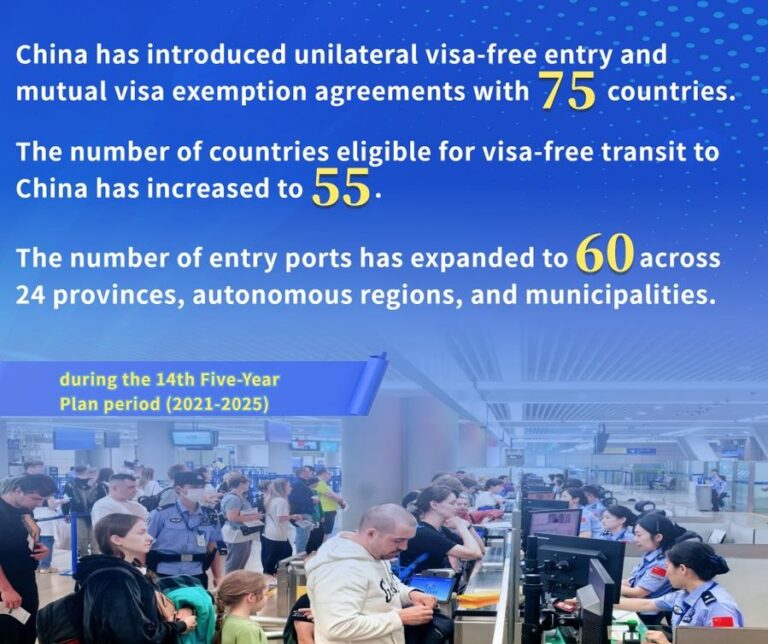
Thanks to a series of visa relaxation measures, including unilateral visa exemption and visa-free transit, China’s inbound tourism is regaining momentum and redefining itself.
by Zhong Ling
From the imperial grandeur of the Forbidden City to the misty peaks of Zhangjiajie and the dazzling skyline of Shanghai, China’s appeal is drawing more international travelers than ever. In the first half of 2025, foreign nationals made 38.05 million cross-border trips, up 30.2 percent year on year.
Thanks to a series of visa relaxation measures, including unilateral visa exemption and visa-free transit, China’s inbound tourism is regaining momentum and redefining itself.
Since 2023, China has been opening its doors wider to international visitors through forward-looking policies and upgraded services. Earlier this year, American YouTuber IShowSpeed’s visit, which racked up more than 37 million views, offered a glimpse of this transformation. Travel to China today isn’t just about sightseeing — it’s about experiencing the country seamlessly.
At the heart of this new appeal lies a generation of homegrown brands and next-level experiences. Whether it’s food, transport or scenery, China doesn’t just meet expectations — it exceeds them. You may not have visited yet, but chances are you’ve already heard of tea chains like Chagee and Mixue, or stumbled across Labubu, the quirky collectible adored worldwide. And who wouldn’t marvel at how China’s electric vehicles manage to be both cutting-edge and affordable?
Food remains China’s most beloved cultural symbol. From fiery Sichuan hotpot to delicate Cantonese dim sum, its culinary landscape stretches across different regions, each offering distinct and unforgettable flavors. Travelers may arrive with cautious palates, but one taste of the hotpot would have them hooked — sweating, smiling and chopsticks flying as they reach for another bowl of rice.
For a country of China’s size, navigating it might seem daunting — until you experience its unrivaled transport system. The world’s largest and fastest-expanding high-speed rail network makes travel effortless, with trains reaching up to 400 km/h (250 mph). Imagine having soybean milk and sticky rice cakes for breakfast in Beijing, then sipping coffee on Shanghai’s Bund by early afternoon after a punctual, smooth and scenic high-speed trip.
And it’s not just travel that’s being upgraded. China is streamlining the tourist experience from tax refunds to mobile payments. Since April, a revamped departure tax refund system has made shopping more rewarding, lowering the minimum spending threshold, increasing refund limits, and expanding the list of eligible stores. In Shanghai alone, refund applications by international tourists surged 143.1 percent year on year in the first half of 2025.
China is also removing payment and language barriers for foreign visitors. Alipay and WeChat Pay now support direct linkage with international credit cards, and Alipay goes a step further by integrating with 13 overseas e-wallets from countries like Singapore, Thailand and the Philippines. AI-powered translation tools are being rolled out nationwide. For instance, Beijing’s Summer Palace recently deployed 51 real-time AI translation devices to better serve international visitors amid the peak tourism season.
Through these genuine cultural exchanges, China is presenting global audiences with a true and full picture of itself. As biased narratives fade and visa-free access bridges distances, China, with much to be explored and a lot more to offer, continues to captivate hearts and minds worldwide.
Editor’s note: The author is a China-based commentator on international affairs.
The views expressed in this article are those of the author and do not necessarily reflect those of Xinhua News Agency.■

